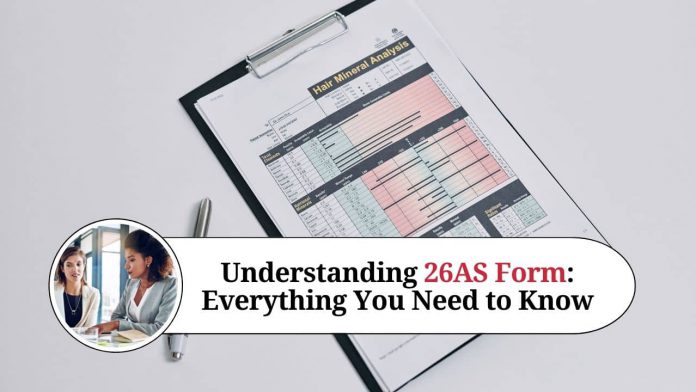26AS Form is a consolidated tax statement that is generated annually for taxpayers in India. The form contains details of all tax-related transactions made by the taxpayer during the financial year. It is caused by the Income Tax Department of India and is available for download on their website.
The form is named after Section 26AS of the Income Tax Act, 1961, which mandates the tax department to collect and maintain information related to tax transactions made by the taxpayer.
Importance of 26AS Form
The 26AS Form is an important document for taxpayers as it serves as a ready reckoner for all their tax-related transactions during a financial year. It contains details of tax deducted at source (TDS), tax collected at source (TCS), advance tax, self-assessment tax, and other taxes paid.
It helps taxpayers to verify the accuracy of the tax credits available against their tax liability. In case of discrepancies, the taxpayer can take appropriate corrective action before filing their income tax return.
Components of 26AS Form
The 26AS Form consists of the following components:
a. Part A – Details of Tax Deducted at Source (TDS)
This section contains details of tax deducted at source by deductors such as employers, banks, and other entities. It includes the name and TAN (Tax Deduction and Collection Account Number) of the deductor, the amount of TDS deducted, and the date of deduction.
b. Part A1 – Details of Tax Deducted at Source for Form 15G/15H
This section contains details of tax deducted at source for Form 15G/15H. These forms are submitted by individuals to declare that their income is below the taxable limit and hence, no tax needs to be deducted at source.
c. Part A2 – Details of Tax Deducted at Source on Sale of Immovable Property
This section contains details of tax deducted at source on the sale of immovable property. It includes the name and PAN (Permanent Account Number) of the buyer and seller, the amount of sale consideration, and the amount of TDS deducted.
d. Part B – Details of Tax Collected at Source (TCS)
This section contains details of tax collected at source by collectors such as e-commerce operators, hoteliers, and other entities. It includes the name and TAN of the collector, the amount of TCS collected, and the collection date.
e. Part C – Details of Other Taxes Paid
This section contains details of other taxes paid by the taxpayer, such as advance tax and self-assessment tax.
f. Part D – Details of Paid Refund
This section contains details of the refund paid by the tax department to the taxpayer during the financial year.
How to Download 26AS Form
The 26AS Form can be downloaded from the Income Tax Department’s website. Taxpayers can follow the steps below to download the form:
Step 1: Go to the Income Tax Department’s website (www.incometaxindiaefiling.gov.in).
Step 2: Log in to your account using your PAN, password, and date of birth.
Step 3: Click on the “View Form 26AS” option under the “My Account” tab.
Step 4: Select the assessment year for which you want to view the form.
Step 5: Click on the “View/Download” option to view or download the form in PDF format.
Alternatively, taxpayers can also view their 26AS Form by logging in to their net banking account. Many banks provide the option to view the form through their net banking portal.
Common Errors in 26AS Form
While the 26AS Form is an important document for taxpayers, it is not always error-free. Some common errors that taxpayers may come across in their 26AS Form are:
a. Mismatch in TDS amount: There may be instances where the TDS amount mentioned in the form does not match with the actual TDS amount deducted by the deductor. This could be due to incorrect filing of TDS returns by the deductor.
b. Non-availability of TDS certificates: There may be instances where the TDS certificates are not available for a particular financial year. This could lead to a mismatch in the TDS amount mentioned in the form.
c. Non-reflection of tax payments: There may be instances where the tax payments made by the taxpayer do not reflect in the 26AS Form. This could be due to an incorrect PAN or assessment year mentioned while making the payment.
d. Incorrect details of the deductor: There may be instances where the details of the deductor mentioned in the form are incorrect. This could lead to a delay in the processing of the tax returns.
Taxpayers are advised to verify the details mentioned in the 26AS Form before filing their income tax return. In case of any discrepancies, they should take appropriate corrective action to ensure that the tax liability is accurately computed.
Conclusion
In conclusion, the 26AS Form is an important document for taxpayers in India. It contains details of all tax-related transactions made by the taxpayer during the financial year. Taxpayers should ensure that the details mentioned in the form are accurate and any discrepancies are rectified before filing their income tax return. By doing so, they can avoid unnecessary delays or penalties in the processing of their tax returns.
Other Related Blogs: Section 144B Income Tax Act




















